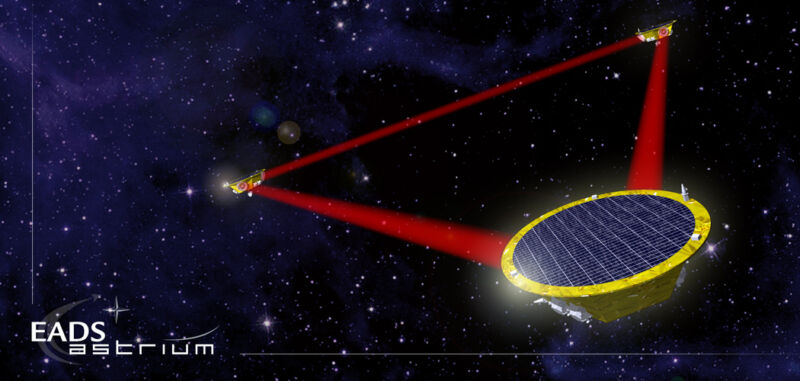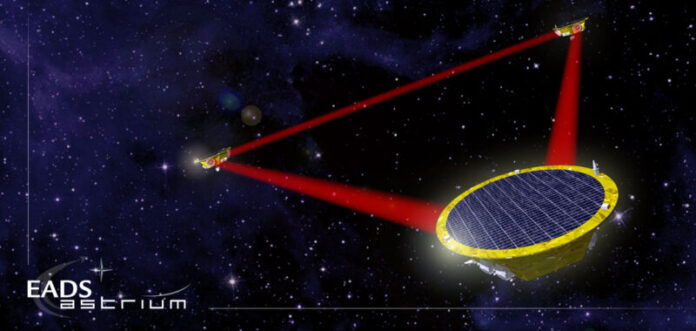
Enlarge / The LISA project will consist of three spacecraft in a triangular configuration, exchanging lasers. (credit: EADS Astrium)
On Thursday, the European Space Agency's Science Programme Committee gave the go-ahead to the Laser Interferometer Space Antenna, or LISA project. This would mean the construction of the mission's three spacecraft could begin as early as a year from now. While the interferometer would follow the same basic principles as the ground-based LIGO (Laser Interferometer Gravitational-Wave Observatory) experiment that first detected gravitational waves, the hardware would be placed 2.5 million kilometers apart, making it sensitive to an entirely new range of astronomical phenomena.
Proven tech
Existing gravitational wave detectors rely on bouncing lasers back and forth between distant mirrors before recombining them to produce an interference pattern. Anything that alters the position of the mirrors—from the rumble of a large truck to the passing of gravitational waves—will change the interference pattern. Having detectors at distant sites helps us eliminate cases of local noise, allowing us to detect astronomical events.
The detectors we've built on Earth have successfully picked up gravitational waves generated by the mergers of compact objects like neutron stars and black holes. But their relatively compact size means that they can only capture high-frequency gravitational waves, which are only produced in the last few seconds before a merger takes place.
Read 7 remaining paragraphs | Comments
Ars Technica - All contentContinue reading/original-link]




